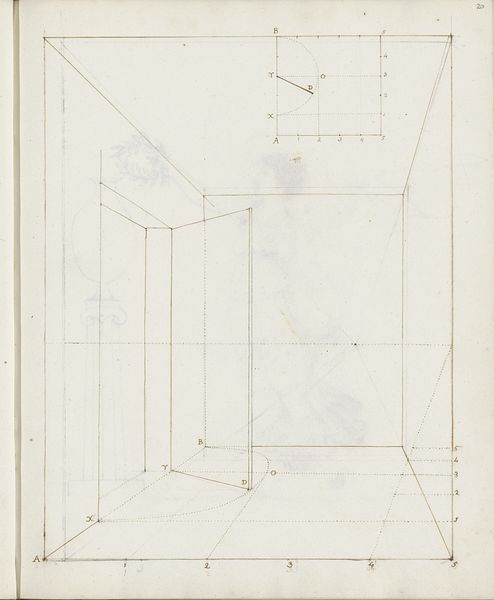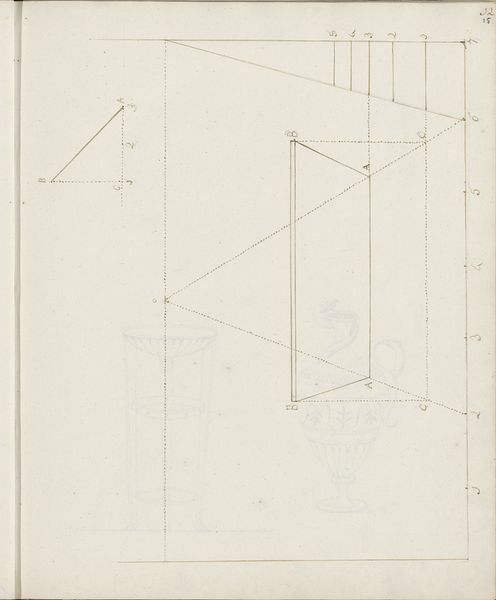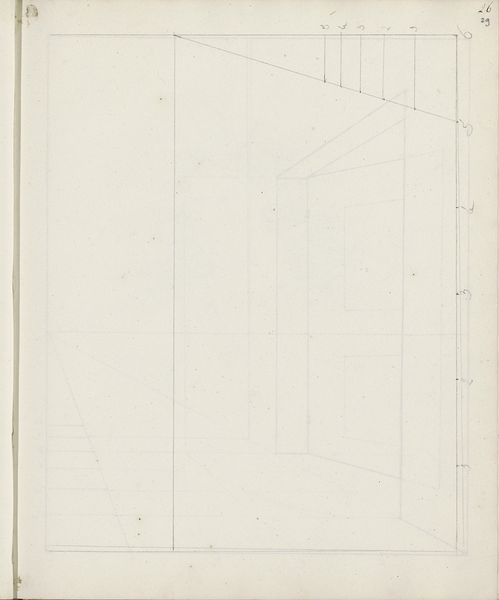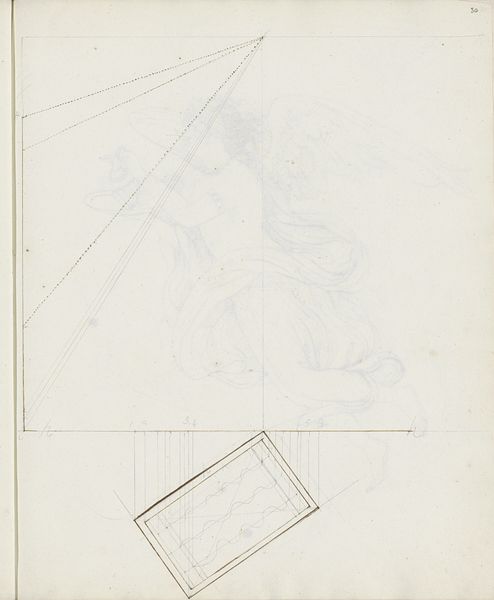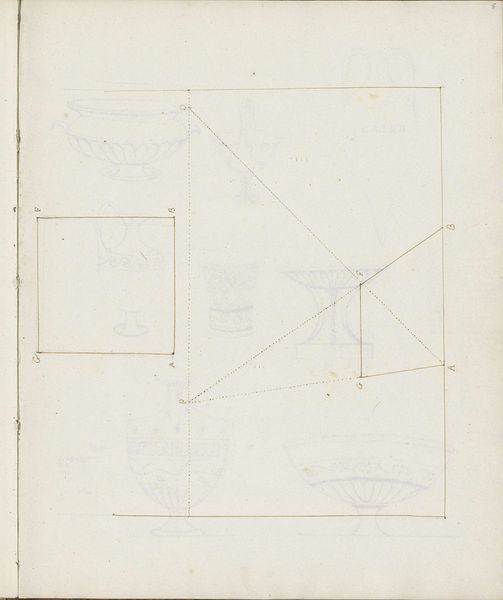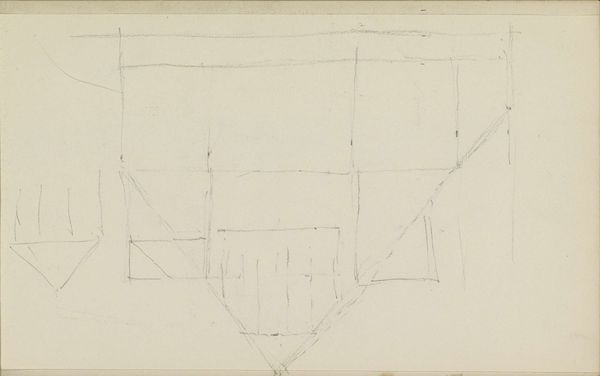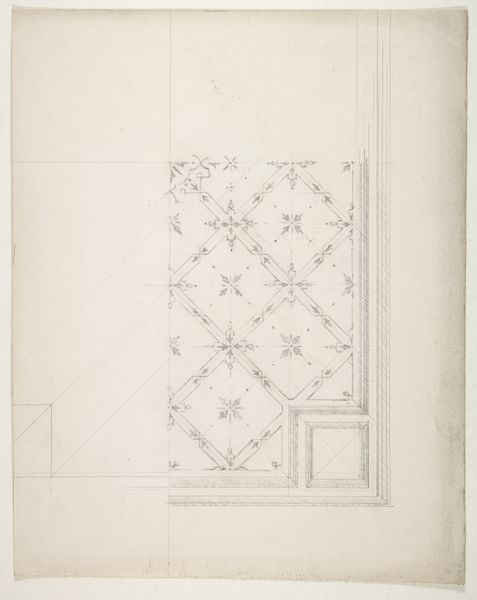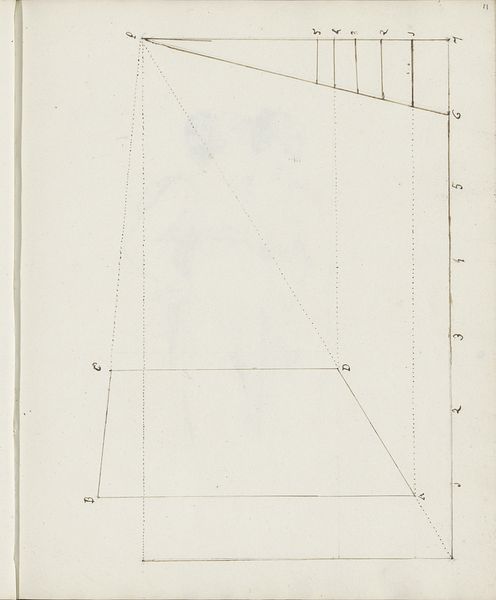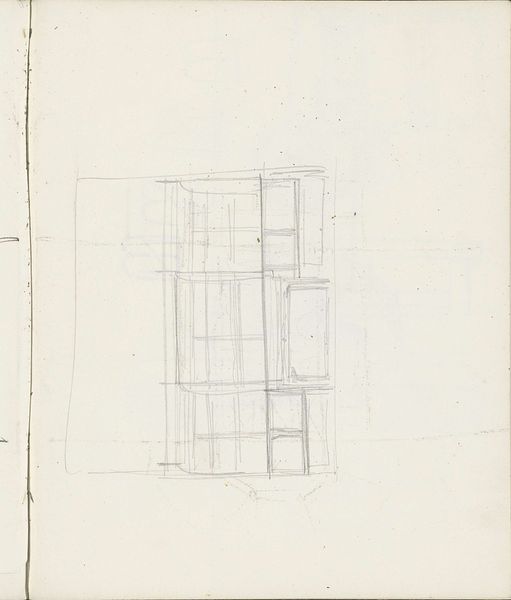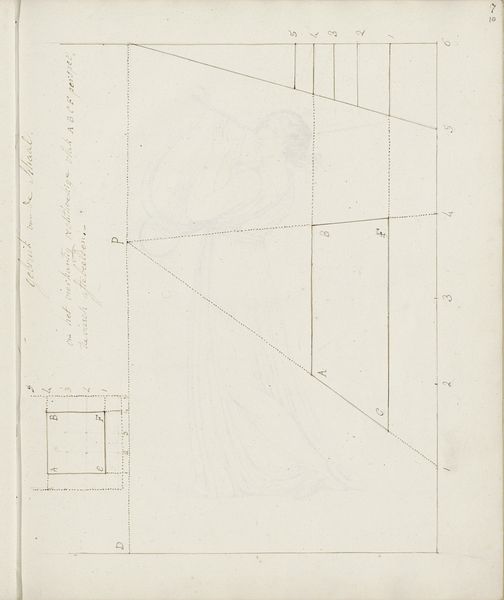
drawing, pencil
#
drawing
#
amateur sketch
#
aged paper
#
toned paper
#
hand written
#
homemade paper
#
ink paper printed
#
incomplete sketchy
#
hand drawn type
#
classical-realism
#
perspective
#
form
#
fading type
#
geometric
#
pencil
#
line
#
academic-art
#
design on paper
Copyright: Rijks Museum: Open Domain
Editor: This is *Perspectiefoefening*, or "Perspective Exercise," a drawing in pencil by Elisabeth Kemper, dating somewhere between 1816 and 1852. It looks like a geometric shape drawn within a room. What's interesting is that behind all of these geometric drawings, you can still see traces of drawings with organic lines, almost as if the artist drew a landscape, and then changed their mind. What do you see in this piece? Curator: What I see here is the ghost of artistic intention, a palimpsest of creative exploration. The underlying sketches remind us that even the most rigid systems, like the rules of perspective, emerge from a ground of lived experience, emotions, and half-formed ideas. Look how the architectural frame dominates, an exercise in control, while the fading landscapes peek through from underneath! Can you think of any cultural meanings related to that geometric figure? Editor: It almost looks like a cross, doesn't it? Curator: Precisely. A "T" shaped cross. But notice, too, the implied vanishing point. The cross form pierces and recedes. It might well be symbolic of a struggle with faith, or perhaps more subtly, a struggle between faith and reason which was the driving narrative of this era. How does that idea make you feel when seeing the image? Editor: I see the piece differently now, more layered, a little more fraught, with both religious meaning and artistic intent coexisting. Curator: It speaks to how personal expression often navigates the structures, literal or otherwise, we inherit. It encourages us to see how old marks inform new paths. Editor: I definitely didn't expect to find that depth in a drawing exercise. Thank you. Curator: My pleasure, perspective exercises offer much more than technical understanding!
Comments
No comments
Be the first to comment and join the conversation on the ultimate creative platform.
